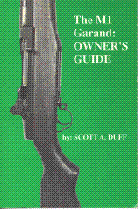
- Finally a single source owner's manual that answers all your questions about the care and feeding of the M1 Garand Rifle--when purchased from Fulton Armory, autographed by the author, Scott Duff!
- Written specifically for the M1 rifleman. With interest in the Garand at levels not previously experienced, new owners often have questions about their recent acquisition. Most common among them are: "Who made my rifle and when?" "How do I take it apart and put it back together?" "How do I clean, lubricate, and maintain it?" This book will answer those questions.
- The civilian owner of an M1 rifle is faced with maintenance activities not encountered by military users. The owner must understand the operation and function of the rifle, and be proficient at dissasembly, assembly, inspection, and replacement of individual components. the purpose of this book is to impart that information to the reader which is necessary to develop the knowledge and ability to perform those tasks. Acquisition of these skills will inspire confidence at the work bench and rifle range!
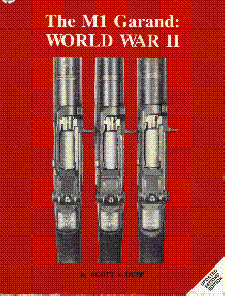
- The standard reference for the WWII Springfield and Winchester Garands--autographed by the author, Scott Duff!
- Volume 1 of the definitive reference set written specifically for the Garand collector. Examines development and production of the M1 rifle from conception through the closing days of World War II. The first Garands, the Gas Trap rifles, are examined in detail. The evolution of Springfield Armory and Winchester produced M1s are chronicled in Data Sheets and photographs detailing original rifles.
- The variations of components are described and their period of use given. The collector is aided in identification of parts changes by detailed photographs and explanations. These descriptions used in conjunction with the Data Sheets allow the collector to verify original rifles or restore their M1 to correct configuration. Month-end serial number tables identify when your rifle was manufactured. Bayonets, slings, and cleaning kits are also examined in detail.
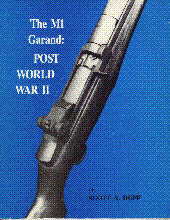
- The standard reference for the post-WWII Springfield, Harrington & Richardson and International Harvester Garands--when purchased from Fulton Armory, autographed by the author, Scott Duff!
- Volume 2 of the definitive reference set written specifically for the Garand collector. Examines the post World War II rebuild program at Springfield Armory, Korean War production, and continuing development. Manufacture of M1s by Springfield, International Harvester, and Harrington & Richardson are chronicled in Data Sheets and photographs detailing original rifles made by all three manufacturers.
- The variations of components are described and their period of use given. The collector is aided in identification of parts changes by detailed photographs and explanations. These descriptions used in conjunction wih the Data Sheets allow the collector to verify original rifles or restore their M1 to correct configuration. Serial number tables identify when your rifle was manufactured.
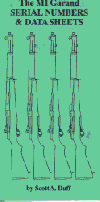
- A must-have take-along for those gun show forays! When purchased from Fulton Armory, autographed by the author, Scott Duff!
- Two of the most critical factors in collecting the M1 Garand are the determination of dates of manufacture and identification of components correct for specific rifles. This is important whether considering the purchase of an M1 that is being presented as original, or attempting to restore a rifle to its correct configuration. The best way to determine the correct components for a specific M1 is through use of data sheets on original rifles. The purpose of this book is to provide the reader with serial number tables and a large sampling of data sheets to aid in identification and restoration.
The M1 Garand: Serial Numbers & Data Sheets is in response to requests by collectors for a pocket reference book of serial numbers and data sheets. The 4" wide by 8" high size is convenient for pocket carry to gun shows, auctions, estate sales, and gun shops.
- Two of the most critical factors in collecting the M1 Garand are the determination of dates of manufacture and identification of components correct for specific rifles. This is important whether considering the purchase of an M1 that is being presented as original, or attempting to restore a rifle to its correct configuration. The best way to determine the correct components for a specific M1 is through use of data sheets on original rifles. The purpose of this book is to provide the reader with serial number tables and a large sampling of data sheets to aid in identification and restoration.

- Finally available! This definitive work covers all aspects of theory, function, repair, accurizing, assembly-disassembly, etc. Includes drawings and technical specifications. A must-have book!
Comments by Thomas Armstrong: "I was very pleased and impressed with the book. This is one of the finest technical publications on the M1, M1A and M14 I've seen to date. Clearly written with detailed pictures of each item and procedure described. This is a must have book for the M1 Garand fan. NOTE: Many of the procedures described in this book do require a rather technical background in machine shop tools, their usage and the measuring tools needed."
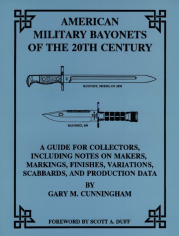
- A single reference book that chronicles the U.S. knife bayonet from those used on the M1892 Krag rifle to the M16.
- The cry "Fix Bayonets!" has caused a rush of adrenaline for 350 years. Early muzzle-loading flintlock muskets were fired from one to several times as opposing lines of infantry closed. Then after firing his last possible shot, the socket-bayonet-mounted musket became a short pike; at that instant infantry combat regressed several centuries.
- The development of magazine-fed rapid-firing rifles in the late 19th century diminished the importance of the bayonet charge. It became not quite a thing of the past, though nearly so. Yet the knife-type bayonet was still deemed a useful combination of weapon and tool.
- No military rifle is truly complete without its matching bayonet and scabbard. Combining bayonet and rifle not only enhances the appearance of the ensemble but also more closely represents its use by the infantryman.
- Until now no single reference book has chronicled U.S. military knife bayonets of the 20 century. Gary Cunningham, a bayonet historian and collector since 1960, has written this book as a culmination of his studies and his acquisitions. In the author's words, "A guide for collectors, including notes on makers, markings, finishes, variations, scabbards, and production data." Covered are bayonets from the Model of 1892 used on the Krag rifle to the current issue M9 for the M16.
- The layout and text is "user-friendly" to beginning and advanced collectors alike. Bayonets and scabbards are addressed in the orider that tehy were adopted. The computer-generated line drawings are of outstanding clarity. A detailed "Specifications Box" is included on each model to guide the reader through the variations.